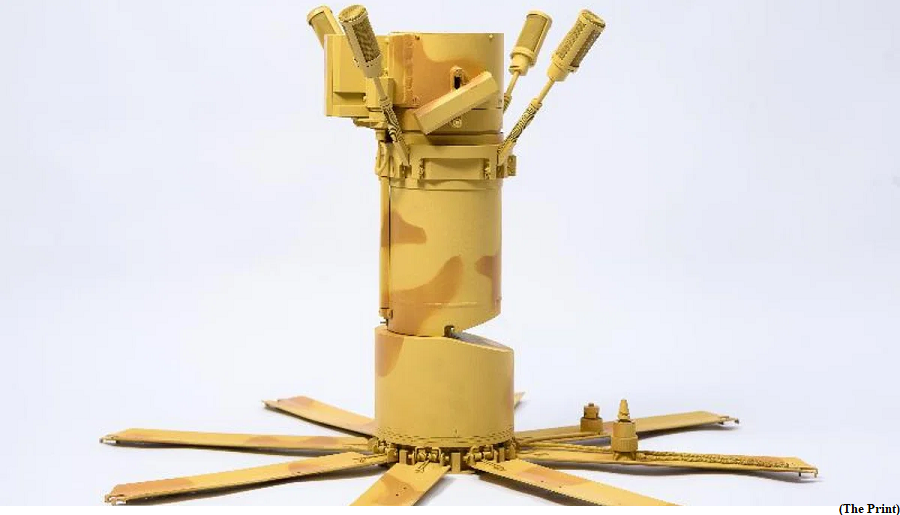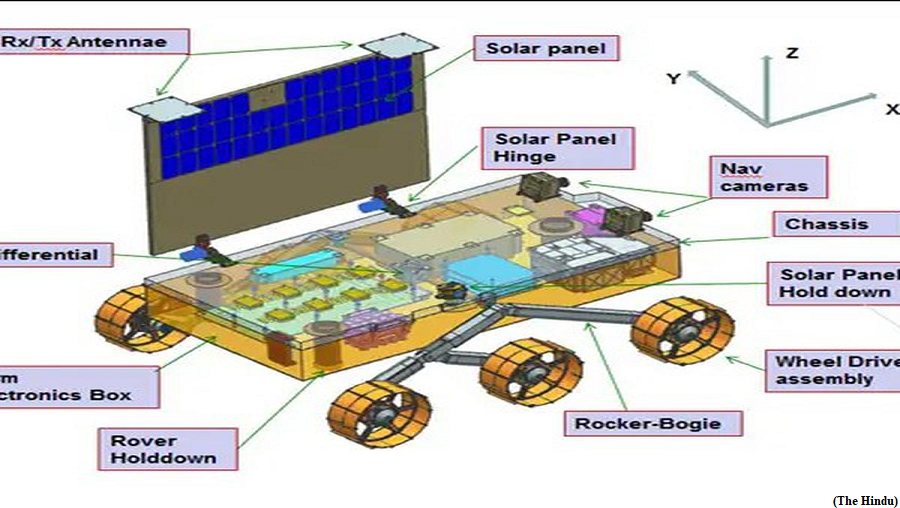Russia anti-tank jumping mines (GS Paper 3, Defence)

Why in news?
- Russia has introduced a new kind of anti-tank mine known as the “jumping mine” that targets armoured vehicles, a system that the US is also eyeing and has ordered for.
- Initially spotted in Ukraine in late April, the advanced munition has been used there since 2022.
PTKM-1R:
- The PTKM-1R is a smart munition designed to damage or destroy tanks and armoured fighting vehicles. It is produced and used only by Russia.
- The PTKM-1R is different from other conventional anti-tank mines used by Russia in the Ukraine conflict as it has the capability to attack the top of an armoured vehicle.
- This is so because the front and sides of a tank or an armoured personnel carrier generally have thicker armour than on the top, making the upper portion the most vulnerable part.
Key features:
- The PTKM-1R is a high-explosive, top-attack, shaped-charge, anti-vehicle landmine. Its transporter-launcher is designed to detect the passage of target vehicles using acoustic and seismic sensors that detect a target by the sound it makes and the ground vibrations it induces.
- Capable of selecting what armoured vehicle to hit, it chooses only those equipment that meet the specified parameters of noise and ground vibration.
- Four acoustic sensors help PTKM-1R to locate an incoming target 360 degrees, which allows detection of a target arriving from any direction, and calculate its travel direction.
- The PTKM-1R is equipped with a self-destroying mechanism with a one- to ten-day programming range that allows it to destroy targets moving at a maximum speed of 50 km per hour.
- The mine has an engagement range of 5 m to 50 m, and a detection range of 100 m. When a target is found, the PTKM-1R determines a flight path and tilts the launch unit by 30 degrees in the direction of the target to form a parabolic ballistic trajectory over it.
Innovation by the US:
- The US Army has begun production of new anti-tank landmines that are launched from the air.
- In August 2022, the US Army awarded a five-year, low-rate initial production contract to Textron Systems for manufacturing its brand-new XM204 top-attack munition, a landmine intended to disable combat vehicles.
- The US Army is looking for a more lethal anti-tank mine system as part of a bigger effort to prepare for a future conflict that may feature armoured engagements with adversaries like Russia and China.
‘Fly me to the moon’ seems to be global ambition in 2023
(GS Paper 3, Science and Technology)
Why in news?
- The year 2023 seems to be the year of the moon as a number of lunar missions are scheduled to take place this year.
- As of July, there are six active lunar orbiters and currently, the only operating rover is China’s Yutu-2 rover released by Chang’e 4, which operates on the far side.

Recent missions:
- Recently, two missions were launched; India’s Chandrayaan-3 on July 14 and Russia’s Luna-25 on August 11.
- Chandrayaan-3 met with success when its lander module safely touched down on the lunar surface and was followed by the rover’s roll-out.
- Luna 25 suffered a glitch and crashed on the moon’s surface on August 19.
Four upcoming missions:
Mission by USA:
- They include the Commercial Lunar Payload Services (CLPS) and Lunar Trailblazer from the U.S..
- The CLPS initiative of the National Aeronautics and Space Administration allows rapid acquisition of lunar delivery services from American companies for payloads that advance capabilities for science, exploration or commercial development of the moon.
- The Lunar Trailblazer on the other hand is an orbiter.
China & Japan’s mission:
- The moon missions include China’s lunar communication and navigation satellite constellation and Japan’s Smart Lander for Investigating Moon (SLIM), which is an orbiter/lander mission.
Hakuto-R mission:
- The 2023 also saw another failure as Japan’s Hakuto-R lander failed to make a moon landing in April.
- Had the Hakuto-R mission completed its task, it would have been the world’s first commercial soft landing on the lunar surface.
Missions in 2024:
- In 2024, Beresheet 2 from Israel, U.S.’s Volatiles Investigating Polar Exploration Rover (VIPER), China’s Lunar Exploration Programme (CLEP) Chang’e 6 and Hakuto-II are expected to be launched.



